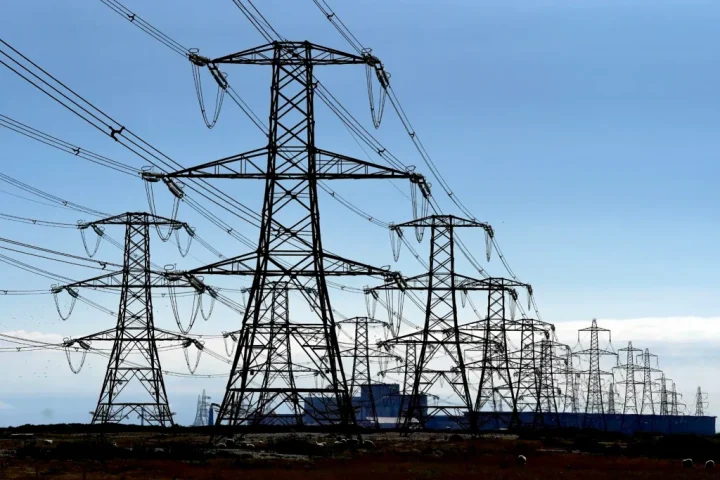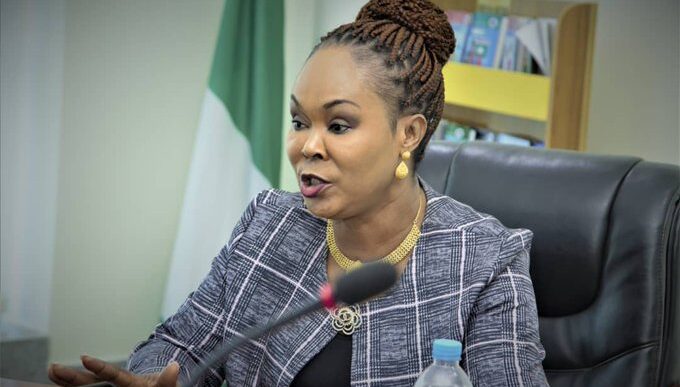The Transmission Company of Nigeria (TCN) says plans are underway to boost the country’s power evacuation capacity to 10,000 megawatts (MW) by 2026.
Sule Abdulaziz, the managing director of the TCN, spoke during the ‘meet-the-press’ programme at the presidential villa in Abuja on Thursday.
Abdulaziz said the government is committed to modernising the national grid and ensuring a stable power supply for citizens.
Highlighting the recent peak power generation record of 5,801.84MW achieved on March 4, the director said TCN is on track to meet its ambitious 10,000MW target, building upon the current evacuation capacity of 8,500MW.
Advertisement
“With the numerous TCN transmission projects completed in the last two years and new ones currently underway,” Abdulaziz said.
“I can confidently state that in less than two years from now, the Transmission Company of Nigeria will conveniently evacuate 10,000 megawatts [of] generated power.
“We have a capacity of 8500MW as of today; by the end of next year, our capacity will reach 10,000 megawatts.”
Advertisement
‘$486m WORLD BANK-FUNDED GRID MONITORING SYSTEM 69% COMPLETE ‘
Speaking further, the TCN boss said the World Bank-funded projects have added 6,000 megavolt-amperes (MVA) of transmission capacity to the grid, with an additional 3,000MVA in progress.
He said other ongoing projects include the new Kano-Kaduna 330kV DC transmission line, the Zaria 330kV substation, and the 132kV substation in Jaji, Kaduna, funded by the African Development Bank (AfDB).
The managing director said the presidential power initiative (PPI) under FGN Power Company, also known as SIEMENS project, has delivered 10 mobile substations, seven of which have been installed, alongside 10 transformers of various ratings connected to the grid.
Advertisement
“The FGN power company is the special purpose vehicle for implementing the presidential power initiative,” he added.
“Having completed the pilot phase of the Siemens project with the installation of the transformers, phase 1B of the project has been approved by the FEC for the reinforcement of seven existing transmission substations.”
Abdulaziz said future phases of the project are already being considered, noting that while the TCN does not directly manage the project, FGN Power Company, a sister agency, is overseeing its execution.
According to Abdulaziz, strengthening grid reliability has caused the TCN to develop the generation load drop sensitivity system, which prevents cascading failures in the absence of a supervisory control and data acquisition (SCADA) system.
Advertisement
Abdulaziz said the ongoing SCADA project, currently 69 percent completed, would improve real-time monitoring and grid efficiency upon completion.
“Our progress is also evident in the 76.47 percent reduction in grid disturbances over the past five years,” he said.
Advertisement
“However, to enable us to manage the grid in the absence of SCADA in place, we developed the generation load drop sensitivity system, which detects and responds to sudden drops in power generation, preventing cascading failures.
“Additionally, all our substations have now been fully digitised and automated. We equally deployed an in-house Internet of Things solution to improve the visibility of power generators.
Advertisement
“This successfully expanded the visibility of power stations from 6 to 27 locations.
“This is being used as a stop-gap solution until the ongoing SCADA project funded by the World Bank is completed.
Advertisement
“The SCADA project is about 69 percent completed, and on completion, it will enhance real-time monitoring and improve grid management and efficiency.”
The TCN boss said the system, funded under the World Bank’s programme, is worth $486 million.
Abdulaziz said when the project is completed, authorities can swiftly detect faults and improve response time.
“Once SCADA is fully implemented, operators will no longer need to manually track faults or depend on phone calls to determine the status of grid infrastructure,” he said.
Speaking on renewable energy integration, the TCN official said the federal government is implementing solar power projects in all 19 northern states, leveraging the region’s abundant sunlight.
Each state, he said, is expected to generate 100MW of solar power, which will be gradually integrated into the national grid.
Abdulaziz also said only 10 percent of total generation can be sourced from solar power without destabilising the grid.
Add a comment









